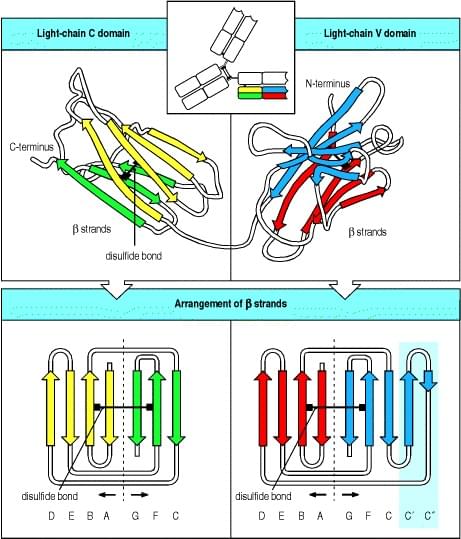3.3). This produces a fragment, the F(ab′)2 fragment, in which the two antigen-binding arms of the antibody molecule remain linked. In this case the remaining part of the heavy chain is cut into several small fragments. The F(ab′)2 fragment has exactly the same antigen-binding characteristics as the original antibody but is unable to interact with any effector molecule. It is thus of potential value in therapeutic applications of antibodies as well as in research into the functional role of the Fc portion.
Genetic engineering techniques also now permit the construction of many different antibody-related molecules. One important type is a truncated Fab comprising only the V domain of a heavy chain linked by a stretch of synthetic peptide to a V domain of a light chain. This is called single-chain Fv, named from Fragment v ariable. Fv molecules may become valuable therapeutic agents because of their small size, which allows them to penetrate tissues readily. They can be coupled to protein toxins to yield immunotoxins with potential application, for example, in tumor therapy in the case of a Fv specific for a tumor antigen (see Chapter 14).
